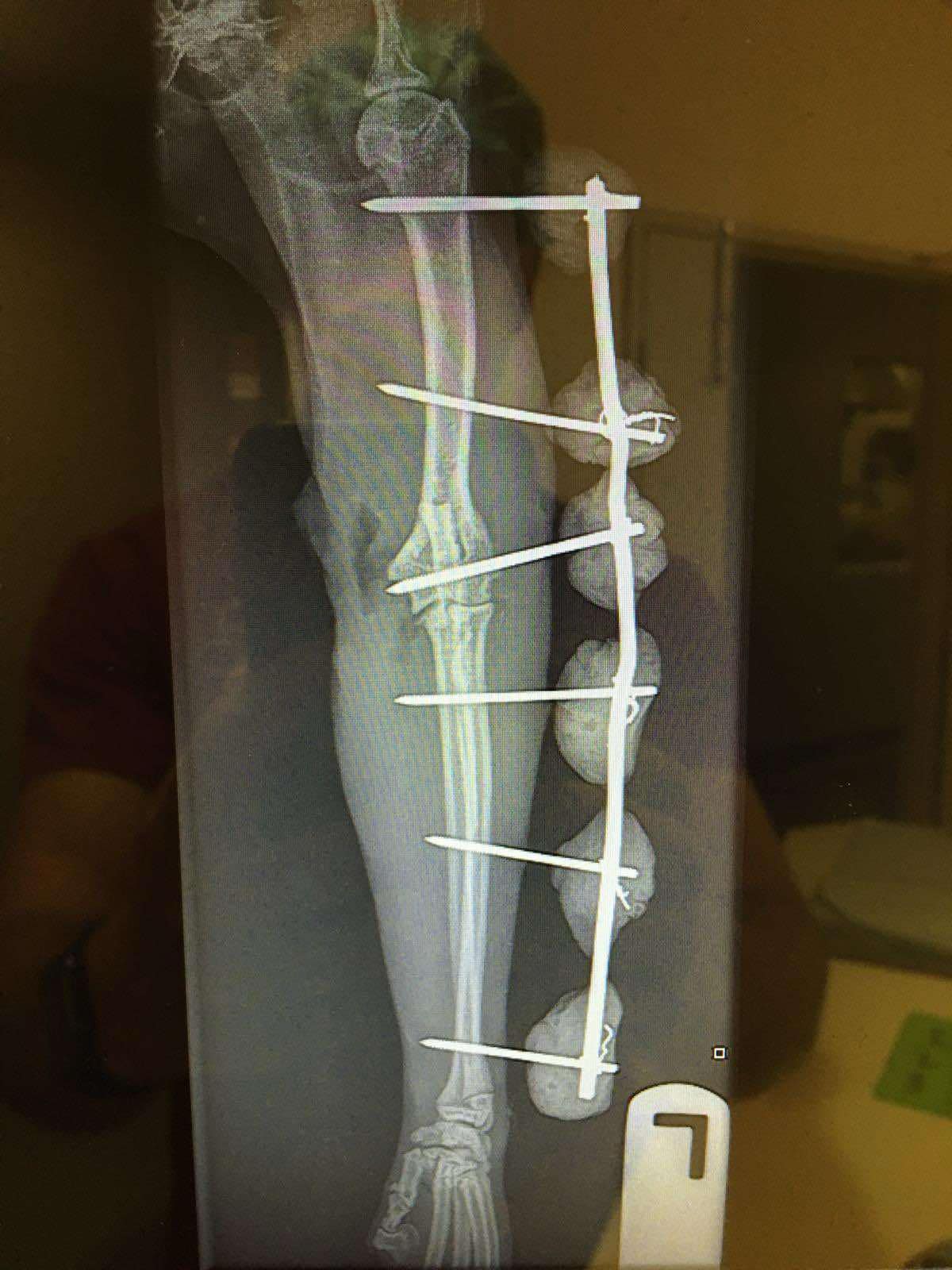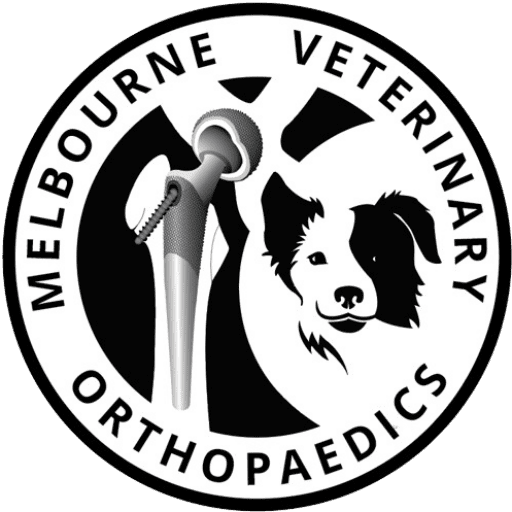Transarticular external skeletal fixation (TAESF) is a specialized surgical technique used in veterinary orthopaedics to stabilize joint injuries, fractures, or post-operative conditions. It involves the application of an external fixator that crosses a joint, providing stability while allowing for some degree of motion in the adjacent structures. Here’s an overview of the procedure, indications, advantages, and considerations:
Overview of Transarticular External Skeletal Fixation
Components of TAESF:
- External Fixator Frame: A device consisting of pins, clamps, and connecting rods that are placed outside the body. The frame stabilizes the bones while allowing some movement at the joint.
- Pins: Metallic pins are inserted into the bone through the skin, extending outside the body. These pins connect to the external fixator frame, securing the bones in the correct alignment.
- Adjustment Mechanism: Many external fixators have adjustable components, allowing for fine-tuning of the tension and alignment postoperatively.
Indications for Transarticular External Skeletal Fixation
TAESF is indicated for various conditions, including:
- Fractures: Particularly those involving joints (e.g., distal radius and ulna fractures in dogs).
- Joint Instability: Conditions that result in joint instability, such as ligament injuries or fractures around the joint.
- Osteoarthritis: In some cases, TAESF may be used to stabilize joints in cases of severe osteoarthritis or joint degeneration.
- Post-operative Support: Following certain surgeries, especially those involving the joint, to provide additional support during healing.

Advantages of Transarticular External Skeletal Fixation
- Stability: Provides significant stability to the joint, which can help promote healing of fractures or soft tissue injuries.
- Minimally Invasive: The procedure generally involves less invasive techniques compared to internal fixation methods, which may require extensive surgical exposure.
- Adjustability: The fixator can often be adjusted postoperatively to provide optimal support and alignment as healing progresses.
- Joint Mobility: Unlike rigid internal fixation, TAESF allows for some degree of movement at the joint, which can help maintain joint function and reduce stiffness.
- Ease of Application: The external application allows for easier management and adjustment of the fixation without the need for additional surgery.
Procedure
- Preparation: The animal is placed under general anesthesia, and the surgical site is cleaned and prepared.
- Pin Placement: Pins are inserted into the bone proximal and distal to the joint being stabilized. Care is taken to avoid damage to nearby nerves and blood vessels.
- Assembly of the Fixator: The external fixator frame is assembled and attached to the pins. This can involve using clamps and connecting rods to create a stable construct.
- Adjustment: The fixator may be adjusted to ensure proper alignment and tension. This step is crucial for effective stabilization.
- Postoperative Care: The surgical site is bandaged, and the animal is monitored during recovery.
Postoperative Care and Management
- Monitoring: Regular follow-up appointments are essential to assess healing and make any necessary adjustments to the fixator.
- Pain Management: Appropriate analgesics should be administered to manage post-surgical pain.
- Activity Restrictions: Limiting the animal’s activity is critical to prevent stress on the fixation and ensure proper healing.
- Hygiene: Keeping the surgical site clean is important to prevent infection, especially around the pin sites.
Risks and Complications
While TAESF is generally safe, there are potential risks and complications, including:
- Infection: Infection can occur at the pin sites or in the surrounding soft tissue.
- Pin Loosening: Pins may become loose over time, requiring readjustment or replacement.
- Joint Stiffness: Inadequate movement or prolonged fixation can lead to joint stiffness or decreased range of motion.
- Fracture Healing Issues: There may be complications related to fracture healing, such as non-union or malunion.
Conclusion
Transarticular external skeletal fixation is a valuable technique in veterinary orthopaedics for managing joint injuries and fractures. By providing stability while allowing for some movement, it can help facilitate healing and maintain joint function. If you suspect your pet may need this type of treatment, consult with a veterinary surgeon who specializes in orthopaedics for a thorough evaluation and personalized recommendations.

